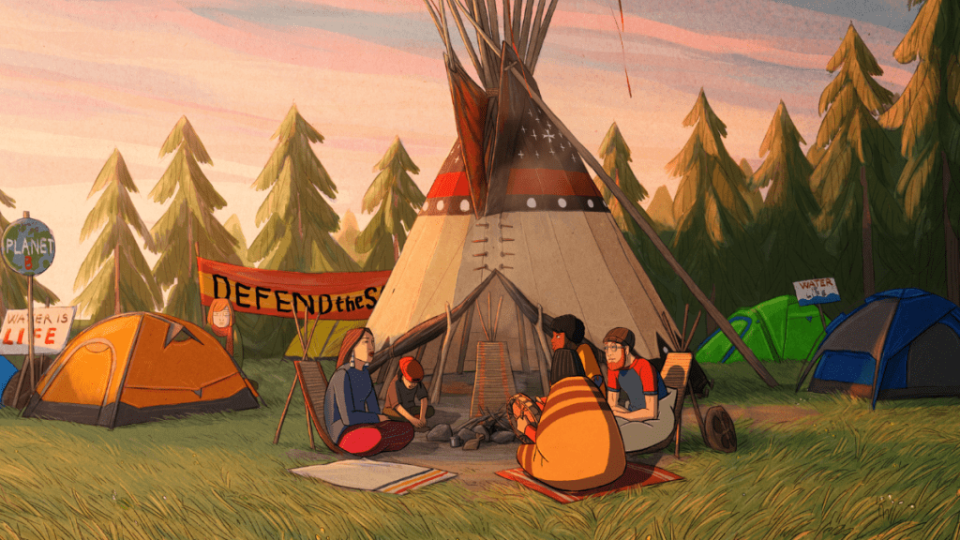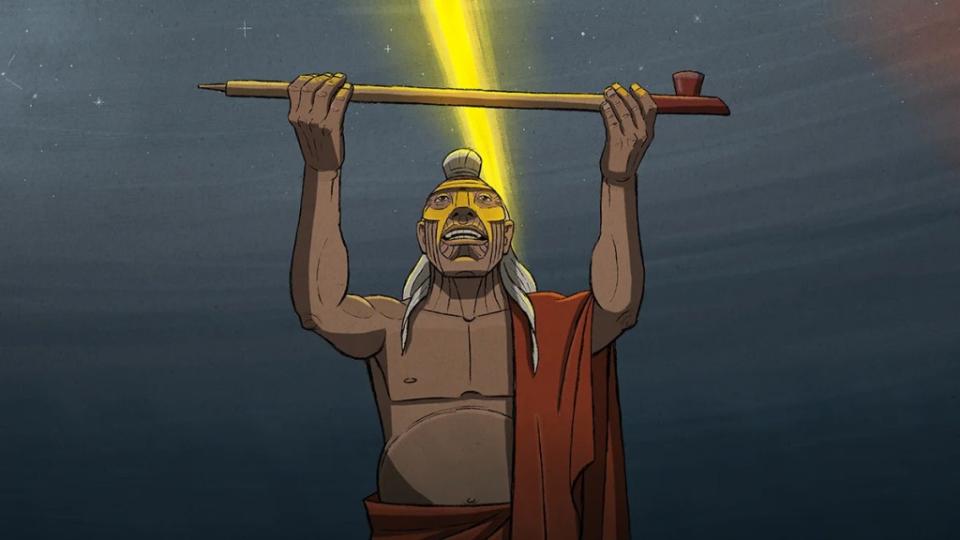How ‘Four Souls of Coyote’ Used Standing Rock Protests to Tell an Ancient Native American Tale
- Oops!Something went wrong.Please try again later.
When Áron Gauder was a child growing up in Hungary, he was drawn to Native American culture. His interest held fast as he grew up, became a filmmaker and made two animated shorts based on Native American tales: “Coyote and the Rock” in 2015 and “Coyote and the Wasichu” in 2016. His new animated feature “Four Souls of Coyote,” which is Hungary’s submission for the Oscars, is the culmination of his lifelong interest in Native American culture.
The film is inspired by a creation myth that posits that humans are but one small part of the natural world. “In this story, humans are not the crown of creation, they are just one of the created beings,” Gauder said during a recent discussion with Steve Pond and “Four Souls of Coyote” producer Réka Temple that was part of TheWrap’s Screening Series.

In richly colored animation, “Four Souls of Coyote” shows Native American protesters confronting the crew of an oil pipeline project that is being built near their ancestral land. From there, the story folds back into the ancient tale of the creation the universe. The message is simple: We must respect and protect the planet.
Gauder got the idea to bookend his movie with a protest set in the present day from the 2016-17 protests against the Dakota Access Pipeline, which would run through the Standing Rock Indian Reservation on the border of North and South Dakota. “While we were working on a script, Standing Rock happened,” he said. “And I thought that this is not, you know, like an ancient story which has nothing to do with how we live now. But this still happening and what these people are protecting, there is water against oil, and they have a message we all have to understand. So that was a really big motivation to make this story.”
Temple, who described herself as a “hands-on producer,” said the process of making “Four Souls of Coyote” during Covid brought the film’s creative team closer together, despite the physical distance. “It was a special experience because everyone was locked down and we were connected via internet and via online Zoom meetings. And we really felt the connection,” she said. Temple estimated that the team was made up of approximately 150 people from Hungary, Italy, Germany and other parts of Europe. “We had 150 people — animators, artists — working on the film, starting from pre-production: character designing, background painting, coloring, animating.” It made for an intense collaboration. “We had a lot of emotions … and I think it really [is reflected] on what we see on screen.”

As Pond pointed out, Gauder’s feature isn’t the only film this year to engage with the idea of coyotes. In a key scene in “Flowers of the Killer Moon,” Lily Gladstone‘s character calls her future husband (played by Leonardo DiCaprio) a coyote — echoing the symbolism of the coyote as a trickster in Osage folklore.
In Gauder’s film, the animal’s role is slightly different. “I think coyote represents our subconscious mind or desire or bad side,” he said. “[It’s] the side we all have in us, but we don’t want to acknowledge or we want to push it down. But it’s there.” In his movie, the coyote stands in contrast to the character of the grandfather, who evokes the creation myth. “The old man is the other side, the aware, sober part of us and what we more relate to, but sometimes our motivations are coming from the coyote, which is living inside [us].”
Watch the full conversation with the “Four Souls of Coyote” filmmakers here.
The post How ‘Four Souls of Coyote’ Used Standing Rock Protests to Tell an Ancient Native American Tale appeared first on TheWrap.

